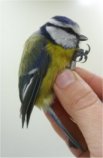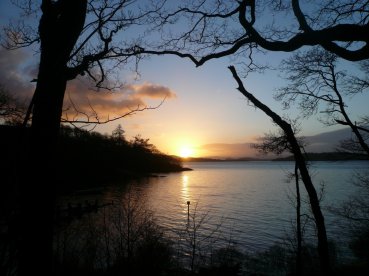Lindsay Henderson
 Contact details:
Contact details:
Room 306, Graham Kerr Building
Institute of Biodiversity, Animal Health & Comparative Medicine
College of Medicine, Veterinary & Life Sciences
University of Glasgow
G12 8QQ
Phone: +44 (0) 141 330 6626
Fax: +44 (0) 141 330 5971
Email: l.henderson.1@research.gla.ac.uk
Academic History
2007 - present: PhD Project: "Sex ratio adjustments in birds: linking environmental conditions and physiological mechanisms"Supervisors: Dr Kathryn Arnold and Prof Neil Evans
2006-2007: MRes Ecology and Environmental Management, University of York
1999-2003: B.Sc Honours, Zoology, University of Glasgow
Research Interests
 "...natural selection should favour parental ability to adjust the sex ratio of offspring produced according to parental ability to invest." Trivers & Willard, 1973
"...natural selection should favour parental ability to adjust the sex ratio of offspring produced according to parental ability to invest." Trivers & Willard, 1973
Since the publication of this influential theory there have been a number of studies documenting the ability of birds to facultatively manipulate the sex-ratio of their offspring in response to a range of social and environmental factors. In this project I will use a wild population of blue tits, Cyanistes caeruleus to further investigate the roles of reproductive physiology, environmental variables and parental quality in avian sex-ratio adjustment.
 If you would like to gain field work experience in a stunning oak woodland in Scotland, please email me. We are looking to recruit field assistants for a minimum of 2 weeks from 1st April to end June 2009. Travel (within the UK) and living costs will be covered.
If you would like to gain field work experience in a stunning oak woodland in Scotland, please email me. We are looking to recruit field assistants for a minimum of 2 weeks from 1st April to end June 2009. Travel (within the UK) and living costs will be covered.
Volunteers will gain experience in bird handling, ecological techniques and habitat mapping.
See click on this link to the SCENE field station where we are based:
Previous Research Projects
What factors determine nest placement in the Marsh Tit, Poecile palustris?
In the marsh tit, nest placement is determined by the female. Therefore placement of the nest could be manipulated by a female preference to facilitate extra-pair copulations (Mennil et al. 2004). Using a four year study of a population of Marsh Tits in Monks Wood, Cambridgeshire, GIS was employed to investigate whether proximity of conspecifics or structure of the woodland habitat within the breeding territory influenced nest location. (Collaborators: Richard K Broughton and Dr Shelley A Hinsley, Centre for Ecology and Hydrology, Monks Wood, Abbots Ripton, Huntingdon, Cambridgeshire PE28 2LS, UK)
Can network theory contribute to our understanding of disease spread and the creation of control methods?
The maintenance and spread of disease is dependent upon the pattern of contacts between individuals within a population. Wildlife populations act as a host for disease, which can pose a risk to both human health and economically important species. Therefore, an investigation into contact structures within populations would provide an understanding of the risk of disease spread and inform the design of management strategies. However, previous research has focused on employing network theory to investigate how theoretical network topologies affect the persistence and spread of disease. There is a lack of knowledge about naturally occurring contact patterns and their stability under different environmental conditions in specific host-disease systems. This study employed a spatial stochastic simulation model of a badger population infected with bovine TB to derive transmission contact patterns, and investigate the impact of epidemiological parameters and control strategies upon network structure. (Collaborators: Dr Piran White and Dr Mark Bulling, University of York, Environment Department, Heslington, York, YO10 5DD, UK)
Scholarships and Awards
2007-2010: NERC PhD studentship
2006-2007: Fully funded NERC studentship awarded for MRes in Ecology and Environmental Management, University of York.
2005: Carnegie Trust for the Universities of Scotland, Small Project Grant. "Food availability and stress hormones: Using non-invasive sampling to quantify the difference in corticosterone levels between fledglings due to the nutrient content in their diet."

